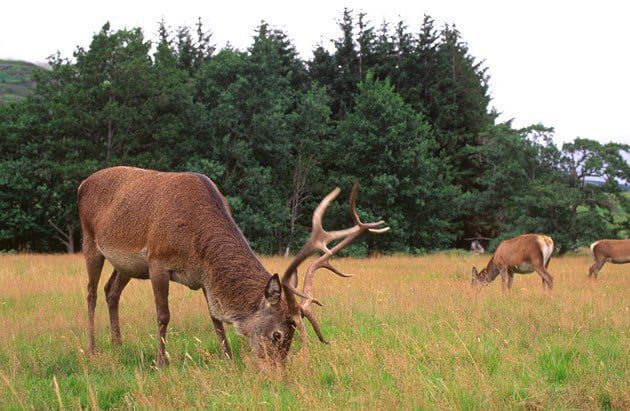With increased collisions between deer and vehicles at this time of year, NatureScot is warning motorists to slow down and be on the lookout for deer on the road.
Incidents of deer-vehicle collisions (DVCs) usually increase in late May and June, as young deer disperse to look for their own territories.
It’s estimated that collisions between deer and vehicles could be as high as 9,000 per year in Scotland, resulting in 50 to 100 human injuries. The majority of collisions take place in early evening through to midnight, with another peak occurring from 6am to 9am.
Over the past 50 years, the number of wild deer in Scotland has increased, as has their range. In the same period, the volume of road traffic has almost doubled. This combination has led to increased deer-vehicle collision rates across the country, with the greatest jump occurring in Aberdeenshire, Fife and the Central Belt.
Over the last 14 months, deer-vehicle collisions have not increased as a result of lower traffic flows linked with Covid restrictions. But it is likely that as controls ease and traffic flows return to more normal levels, there will be increased risk to drivers and deer.
Jamie Hammond, NatureScot Wildlife Management Officer, said:
“Particularly in peak times, we advise motorists to slow down and watch for deer crossing roads. Be aware that if you’re driving near woods, deer can suddenly appear before you have time to brake. If you do hit a deer, report it to the police even if you’re uninjured and your car isn’t damaged, as the deer may be fatally injured and suffering.”
Angus Corby, Transport Scotland Landscape & Biodiversity Advisor, said:
“As the government agency responsible for the trunk road network, Transport Scotland requires our operating companies to prepare annual Deer Management Plans to take account of the likely impact of deer on the network and to develop possible mitigation strategies in association with adjacent local landowners. The agency works closely with colleagues in NatureScot and other relevant organisations with the aim of reducing instances of DVCs occurring across the trunk road network, helping to maintain road safety and supporting the welfare of the animals concerned.”
Driving tips to avoid deer include:
- Try not to suddenly swerve to avoid hitting a deer. A collision into oncoming traffic could be even worse.
- Only brake sharply and stop if there is no danger of being hit by following traffic. Try to come to a stop as far away from the animals as possible to allow them to leave the roadside without panic, and use your hazard warning lights.
- After dark, use full-beams when there is no oncoming traffic, as this will illuminate the eyes of deer on or near a roadway and give you more time to react. But dim your headlights when you see a deer or other animal on the road so you don’t startle it.
- Report any deer-vehicle collisions to the police, who will contact the local person who can best help with an injured deer at the roadside. Do not approach an injured deer yourself – it may be dangerous





